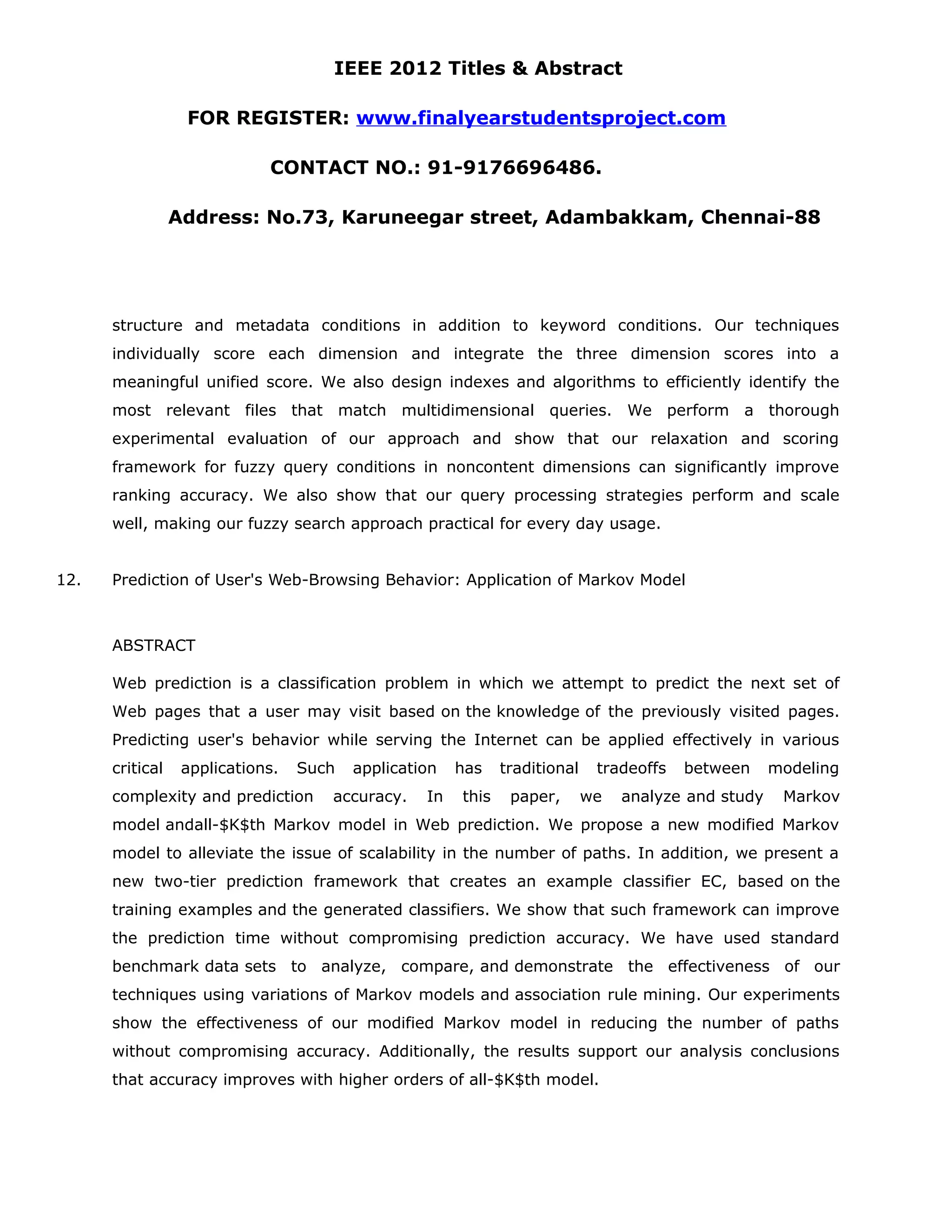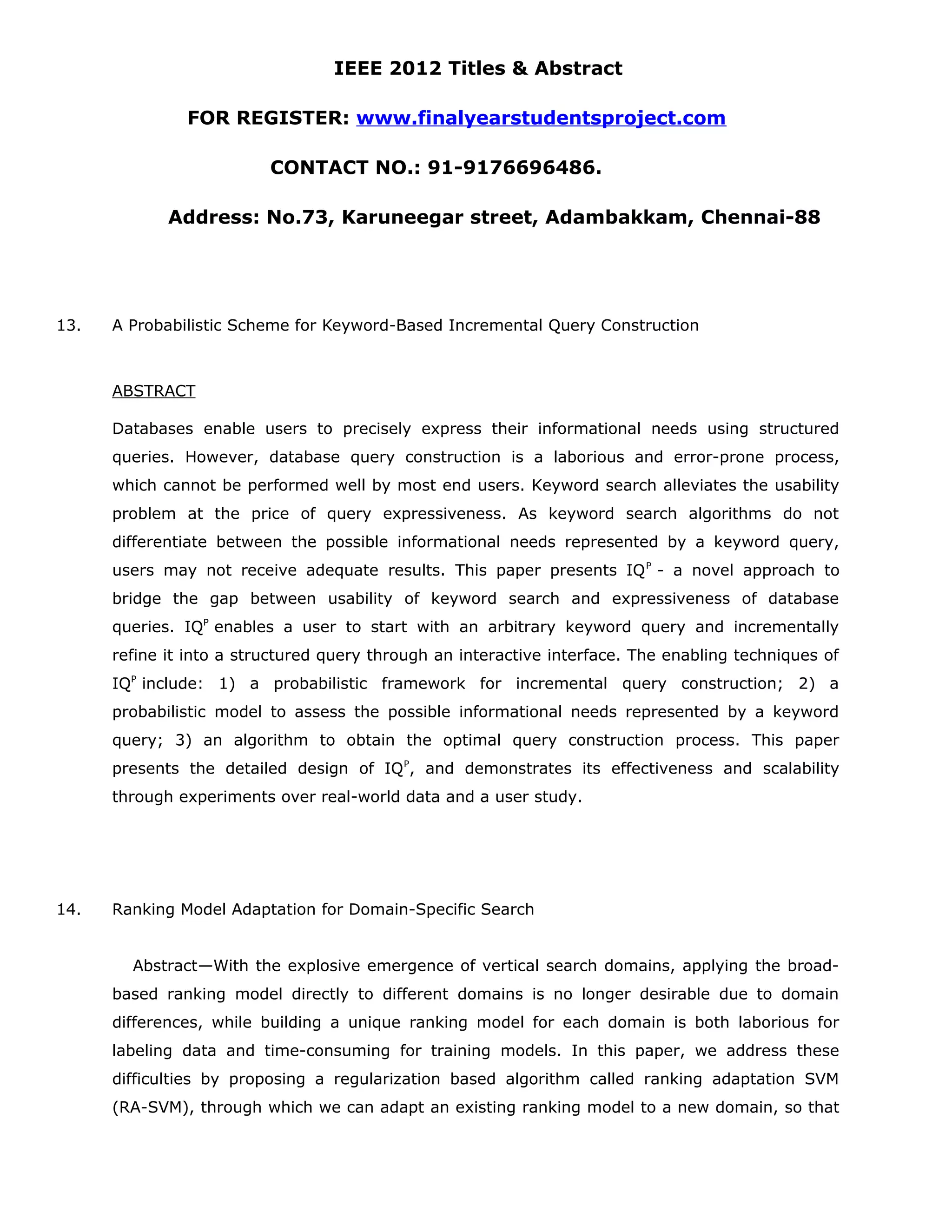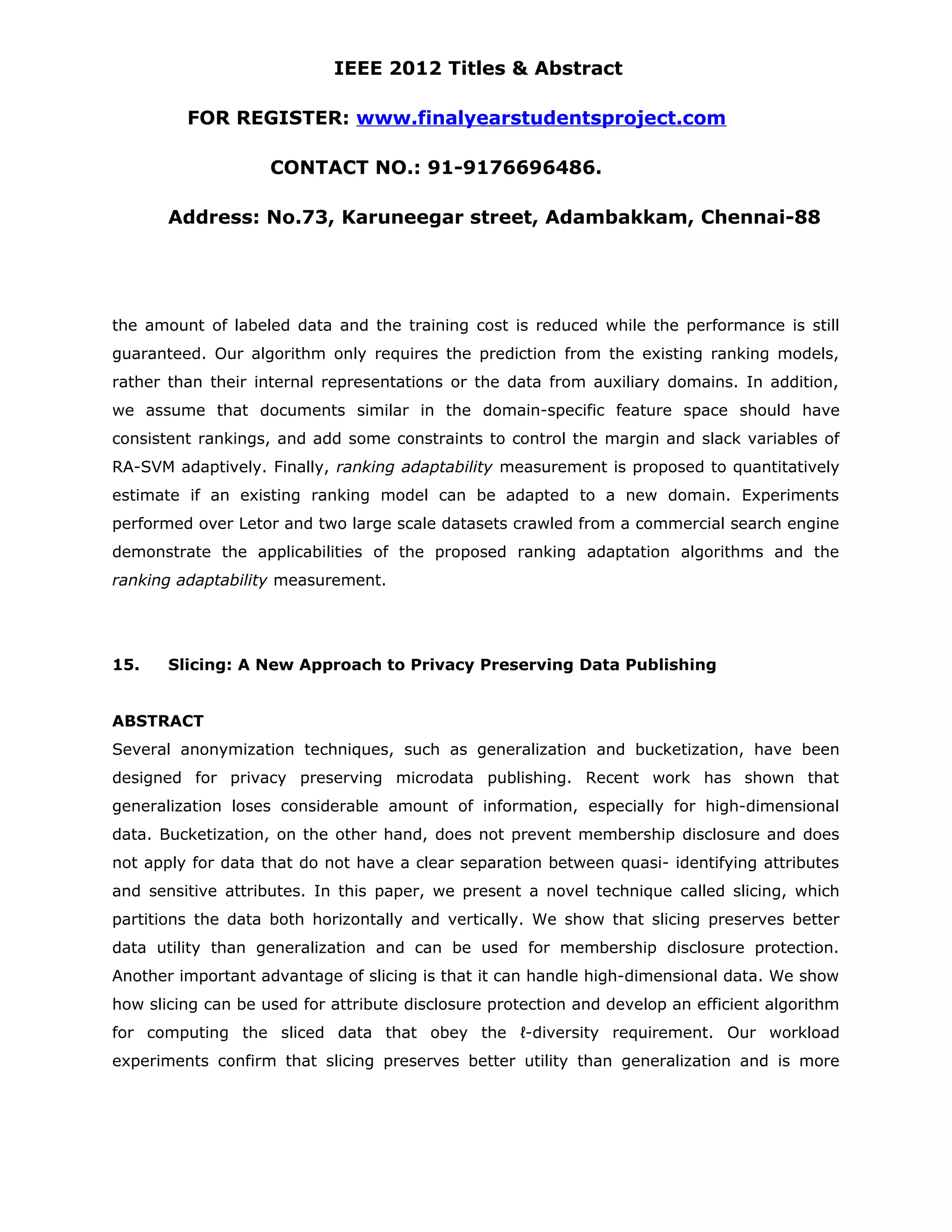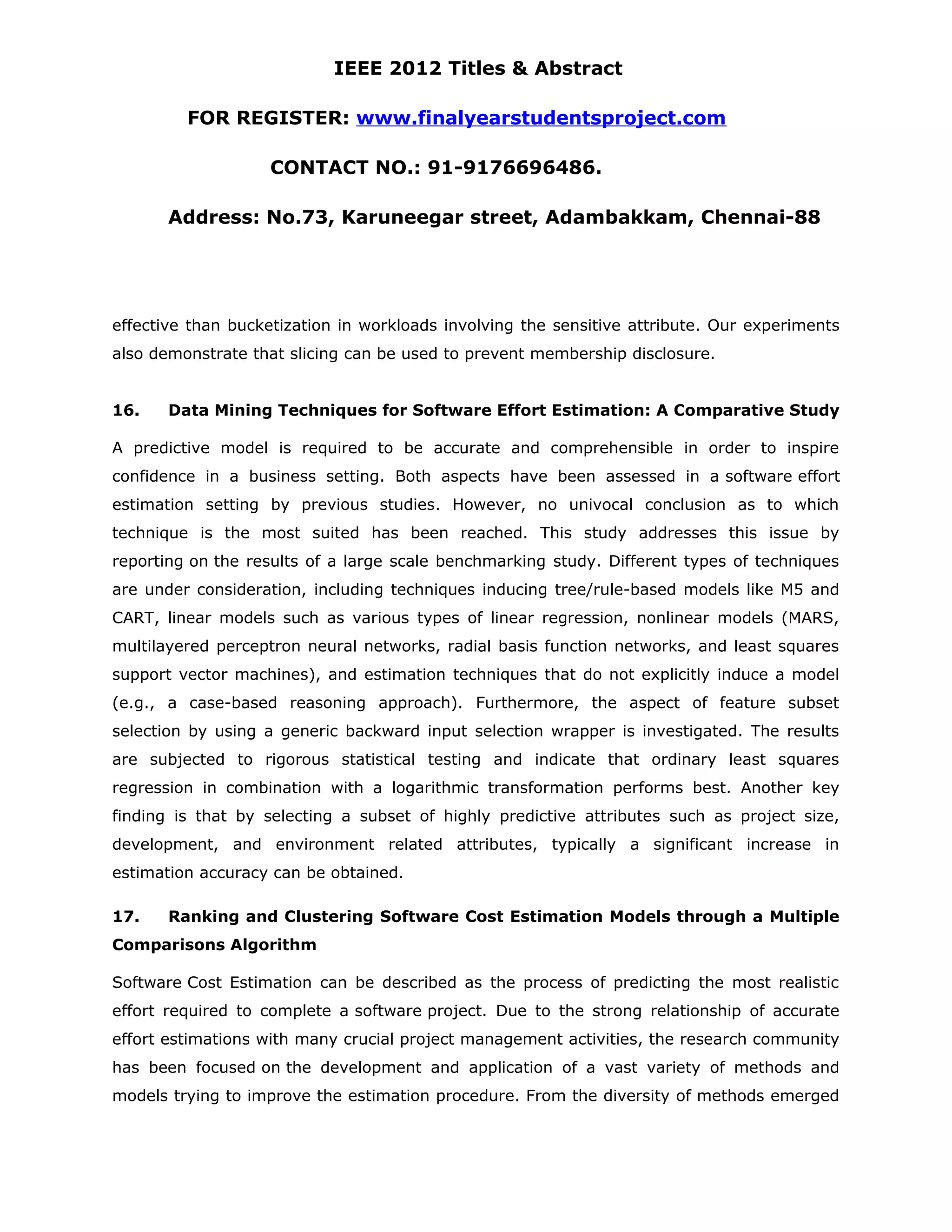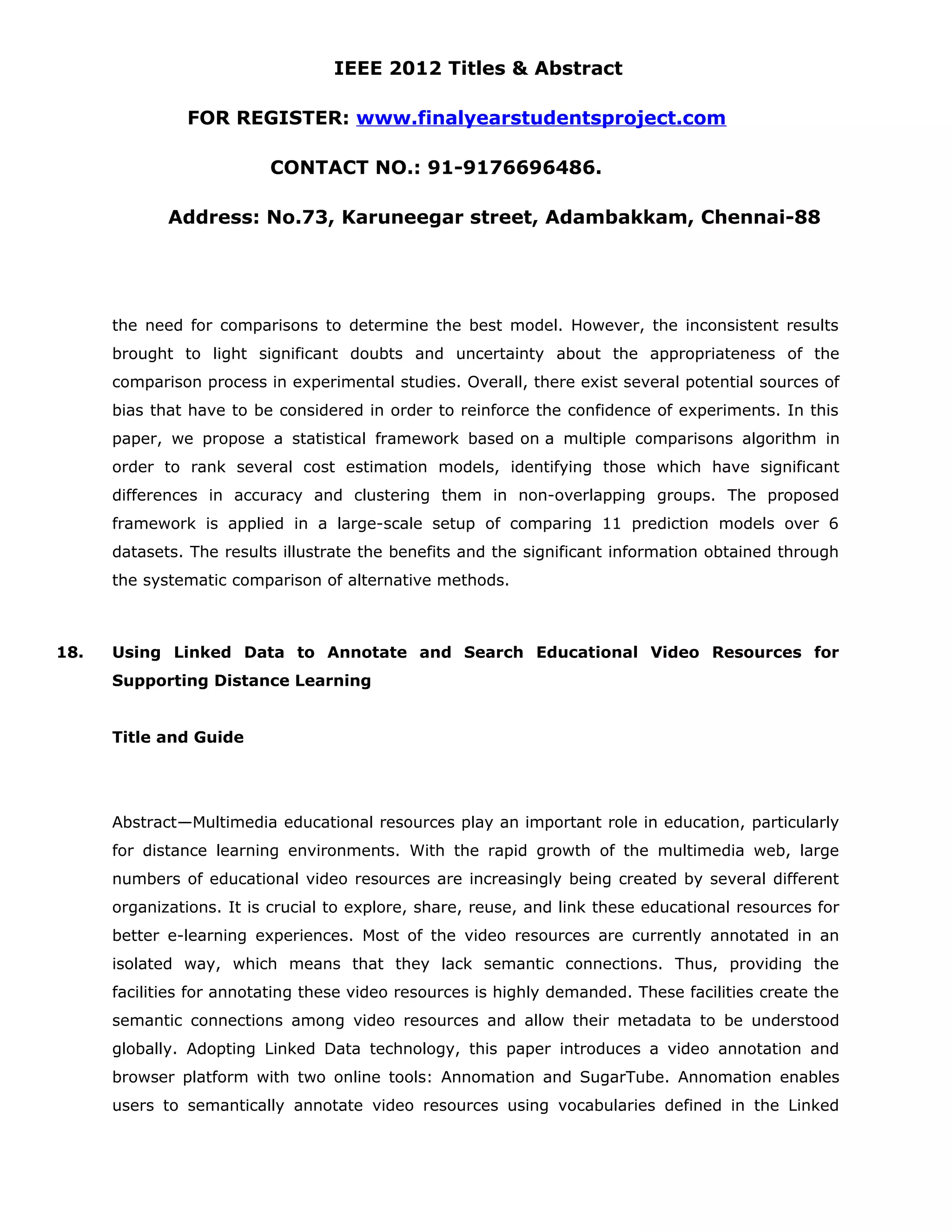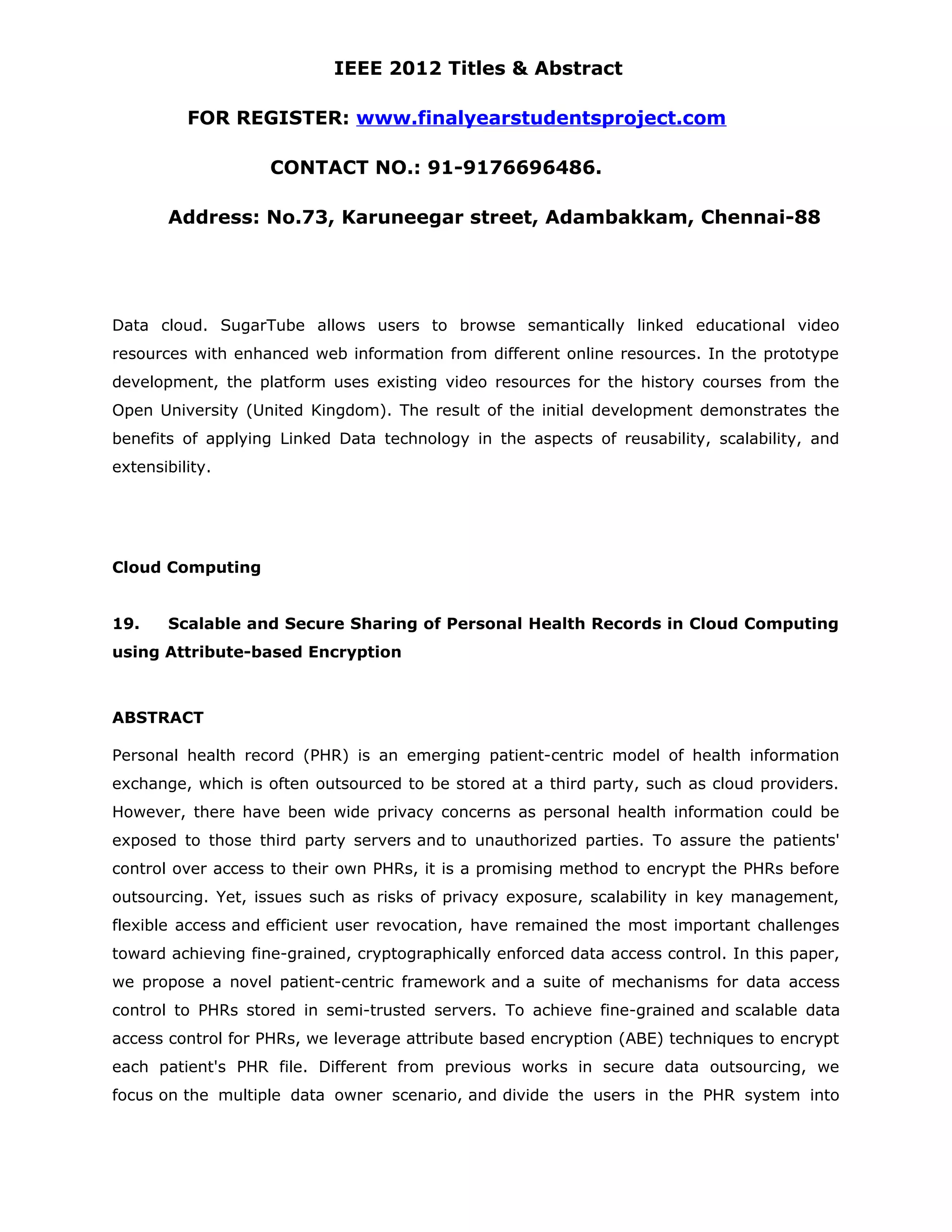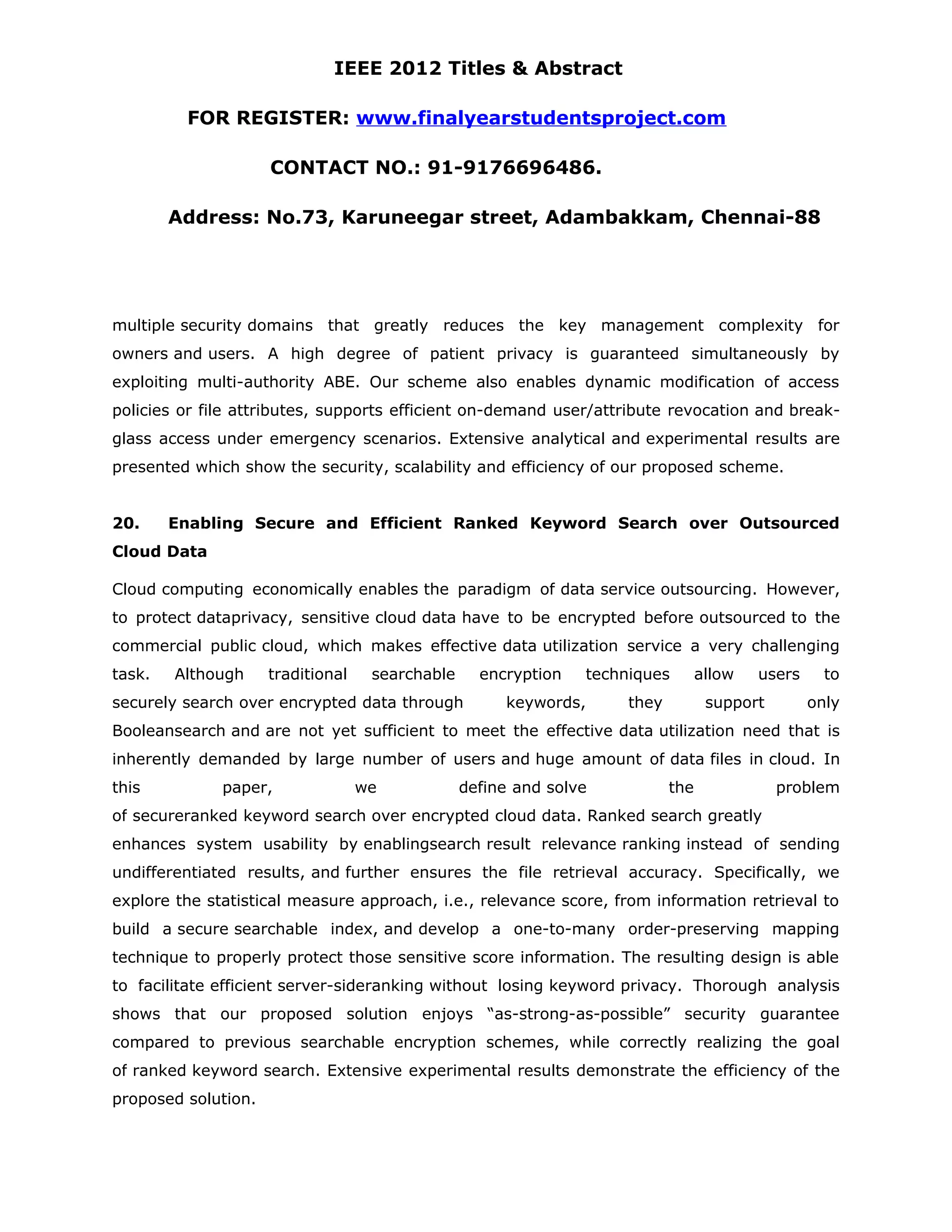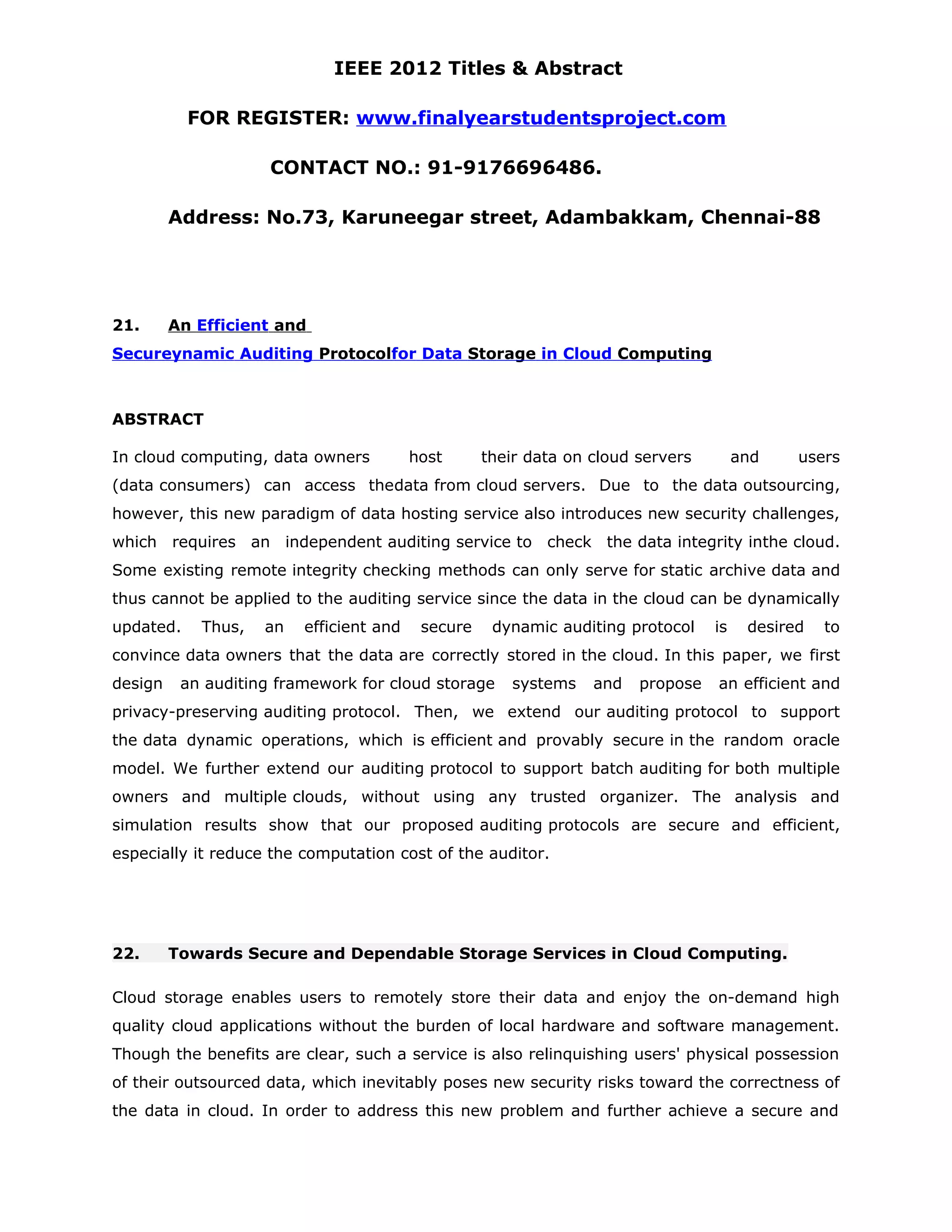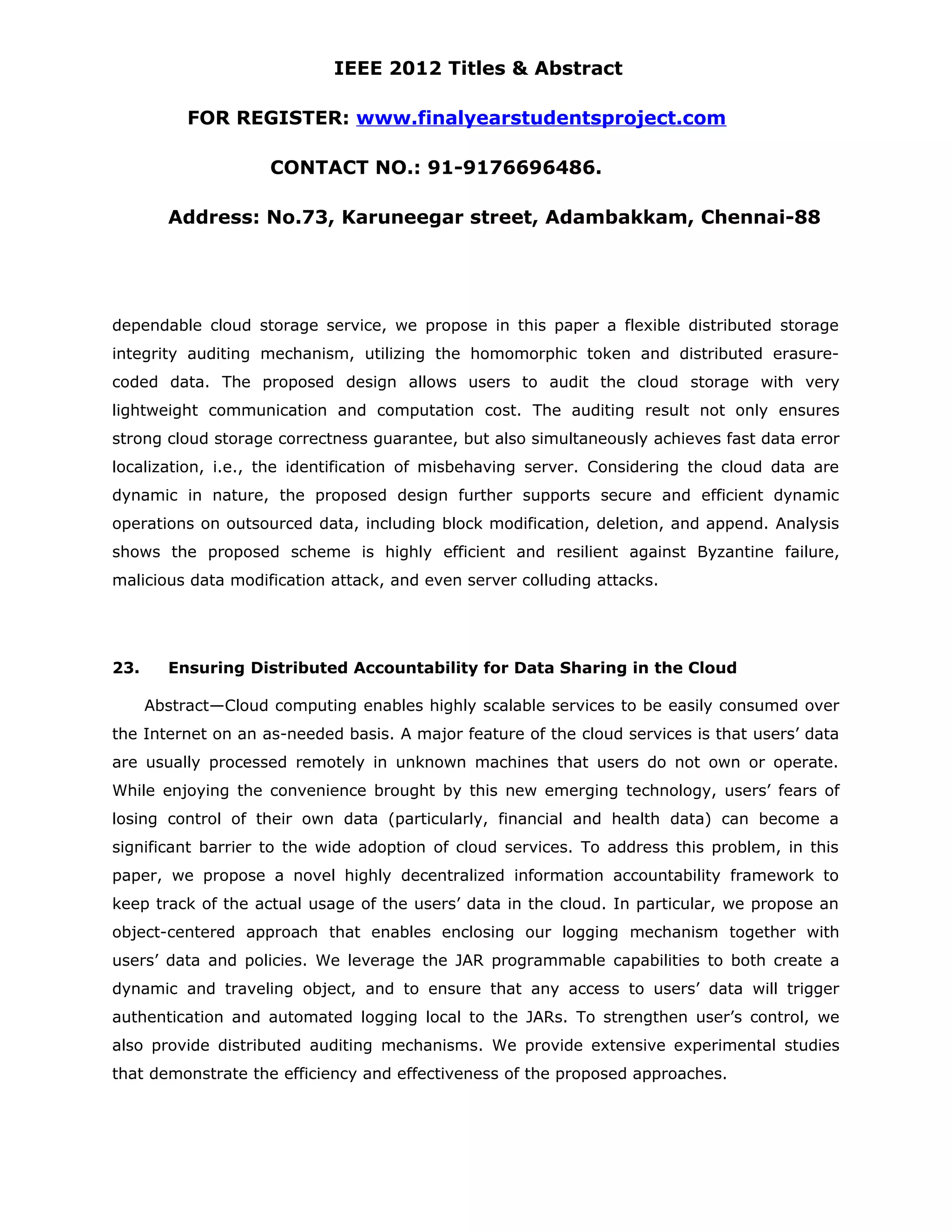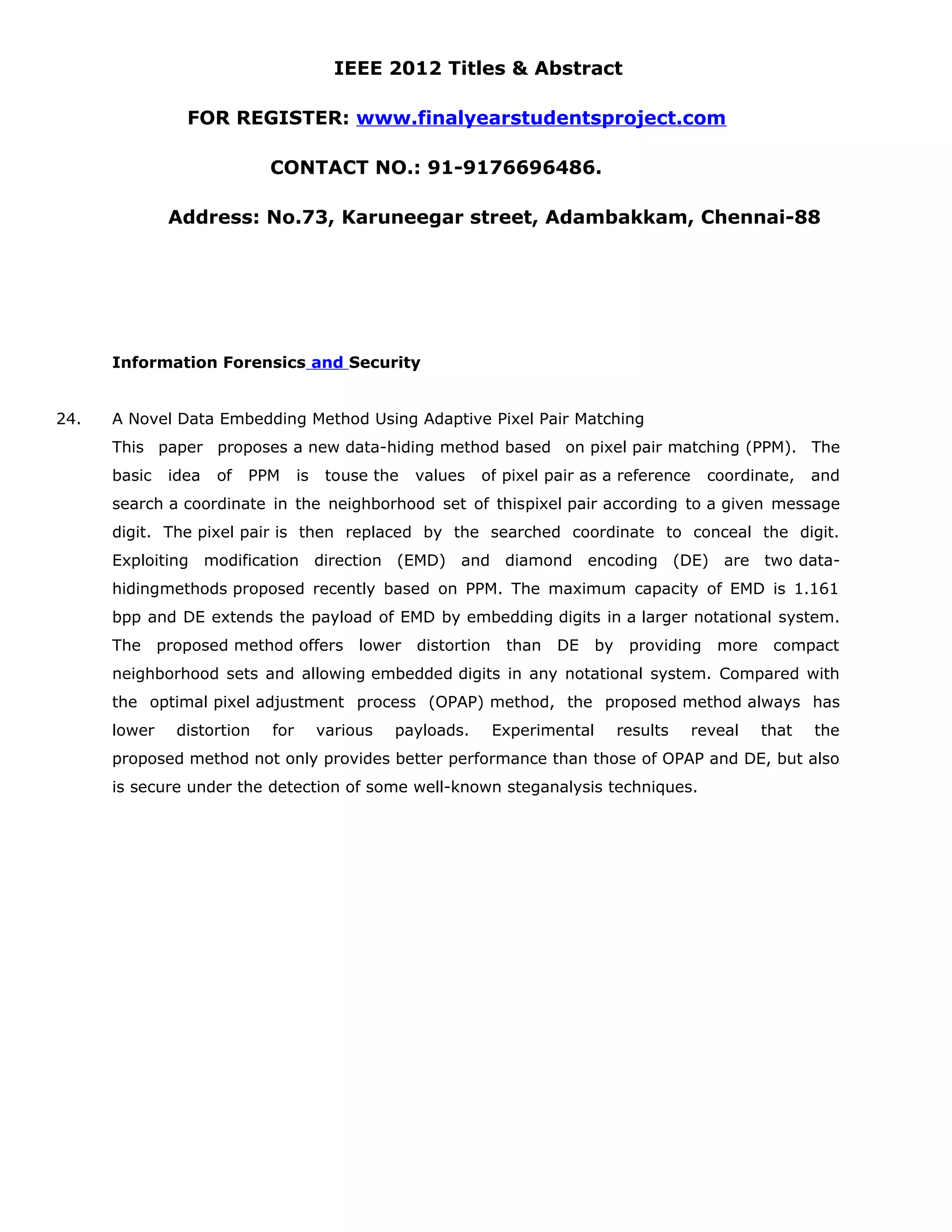The document contains 14 abstracts from IEEE 2012 papers related to networks and network security, wireless networks, mobile computing, wireless sensor networks, and knowledge and data mining. The abstracts summarize research on topics such as load balancing in content delivery networks, authentication protocols for ad-hoc networks, privacy and integrity in sensor networks, opportunistic routing in wireless networks, throughput maximization in wireless networks, and prediction of user web browsing behavior using Markov models.
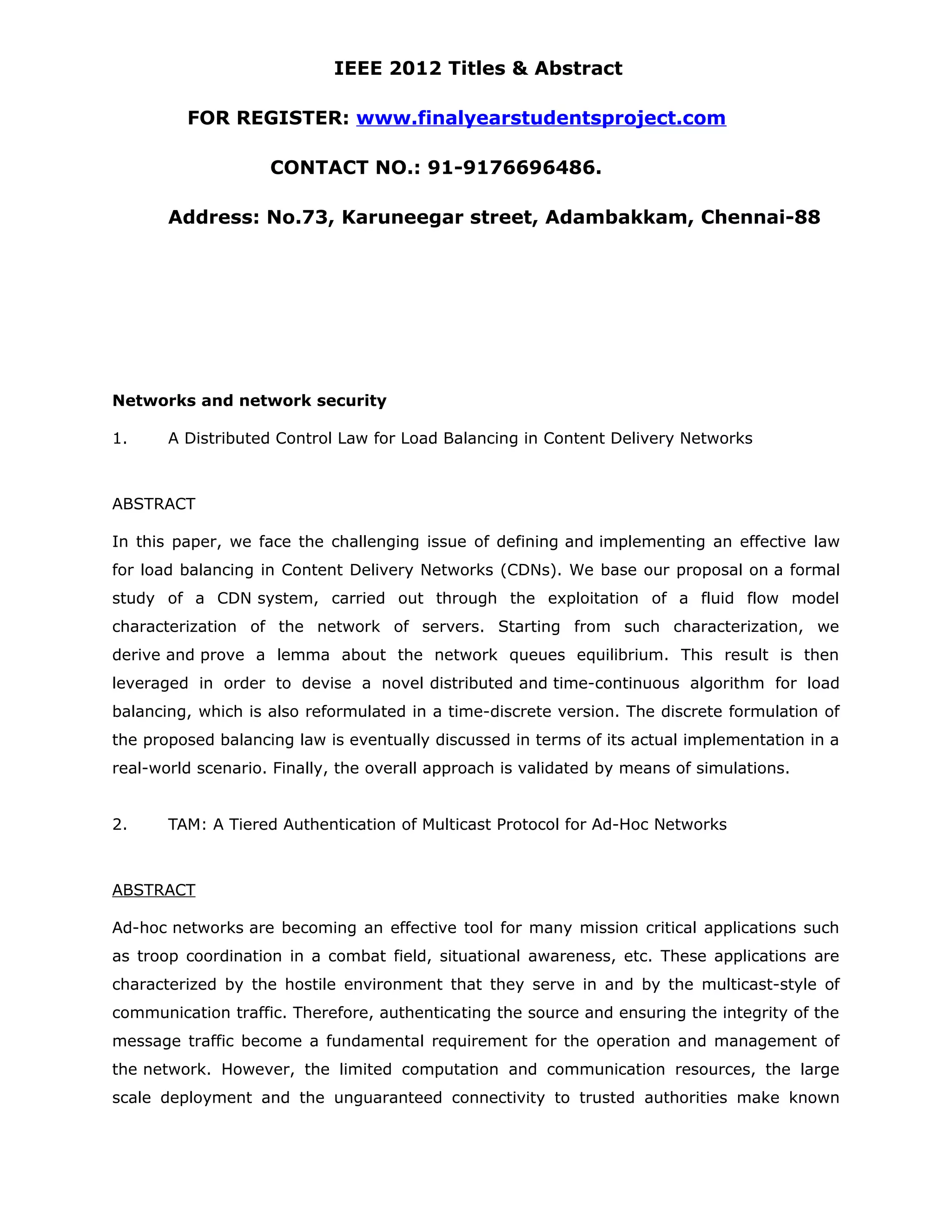
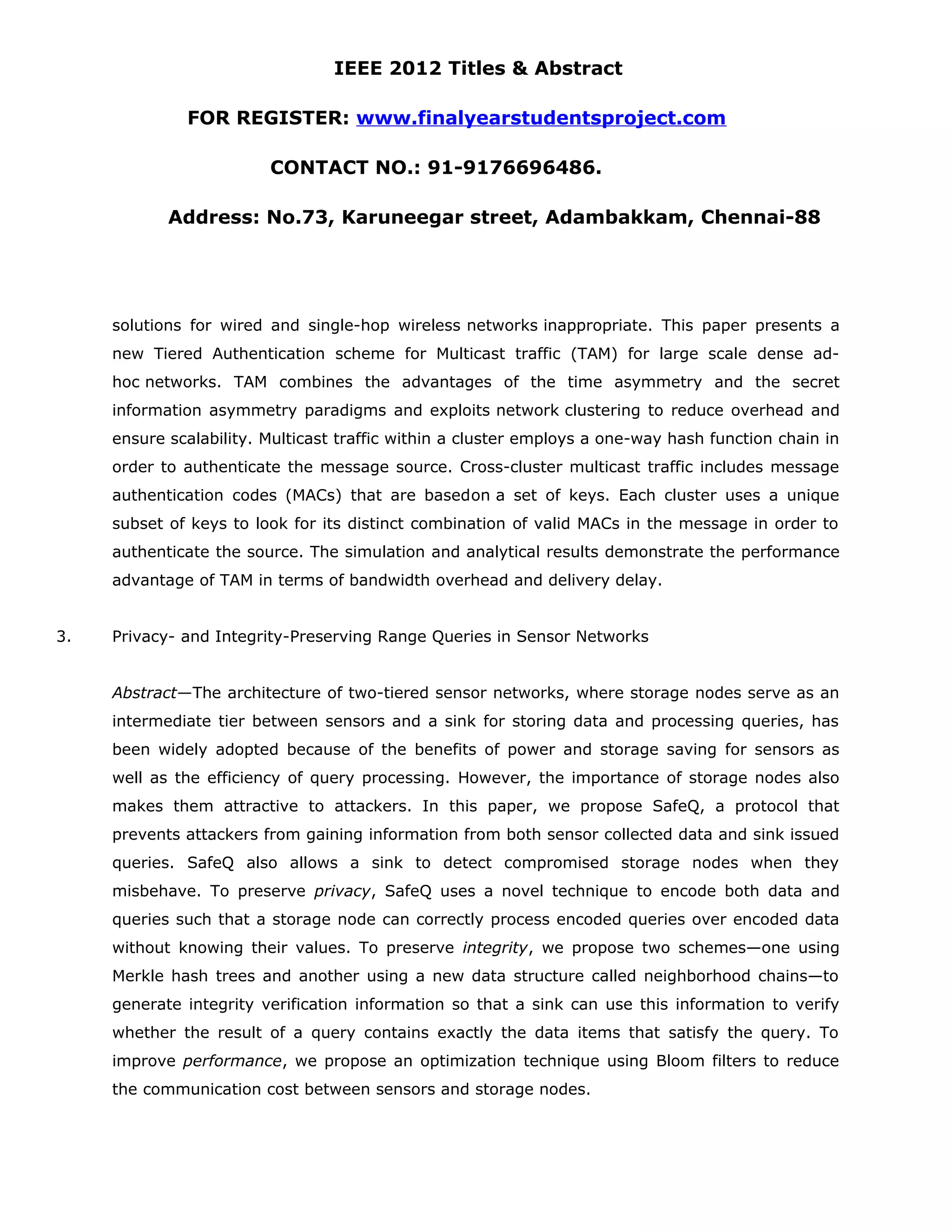
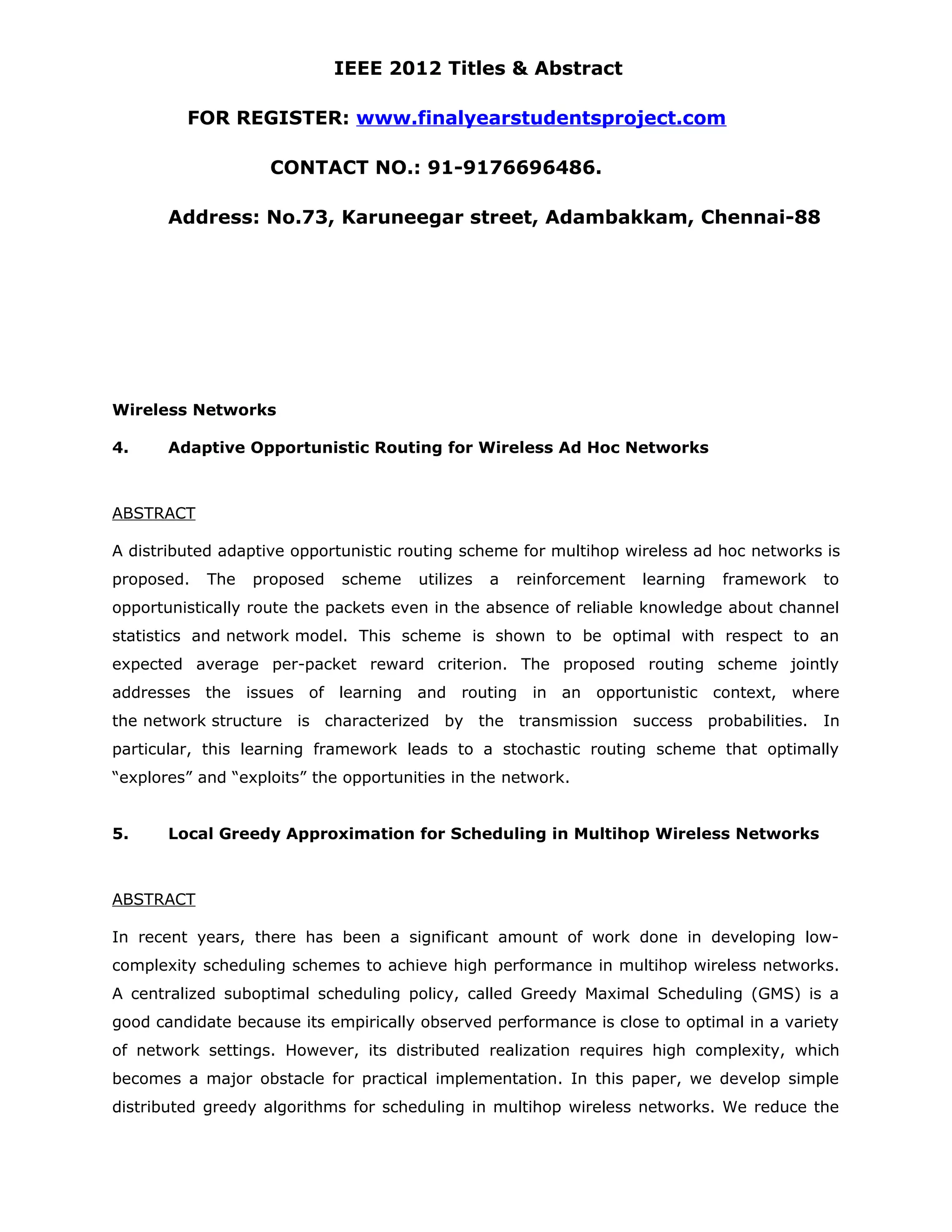
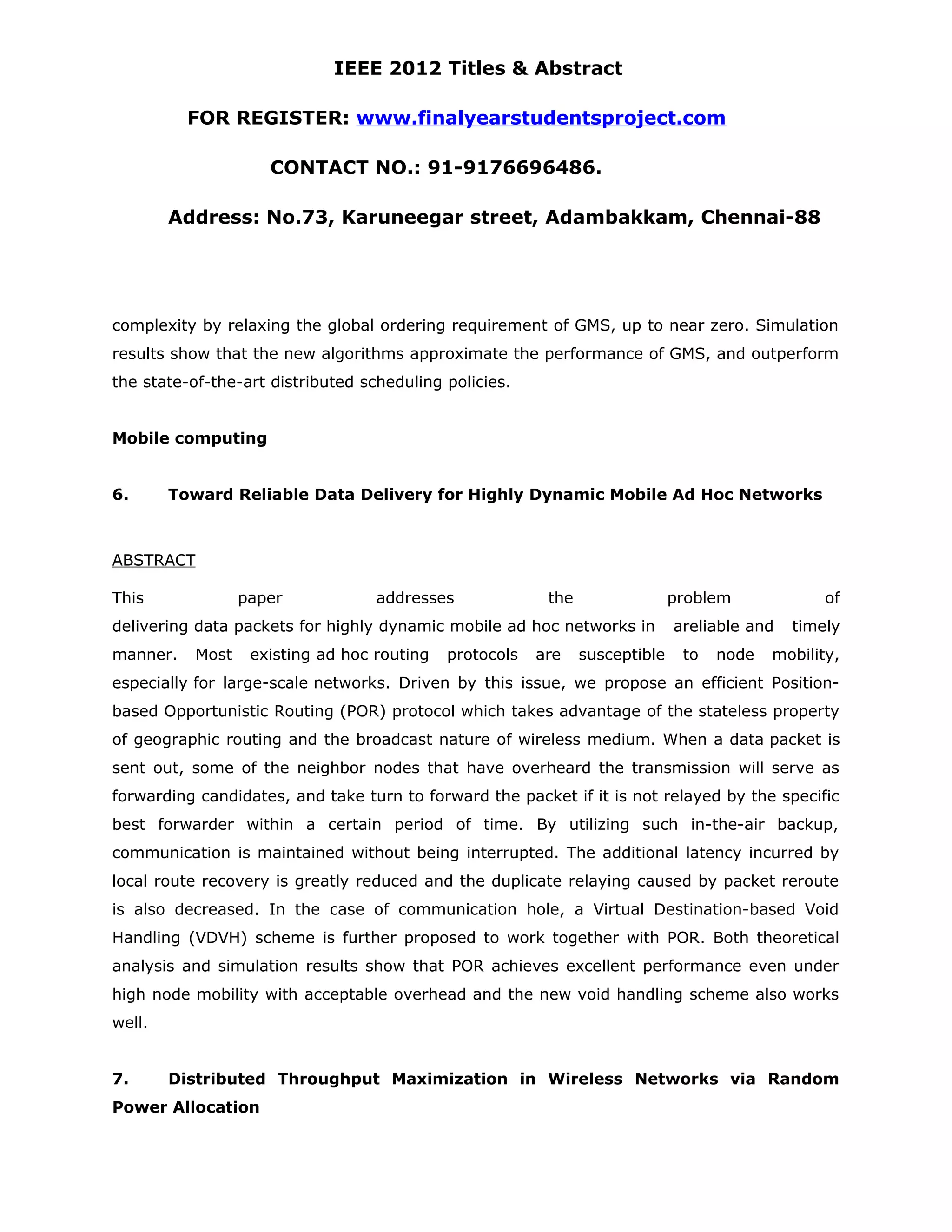
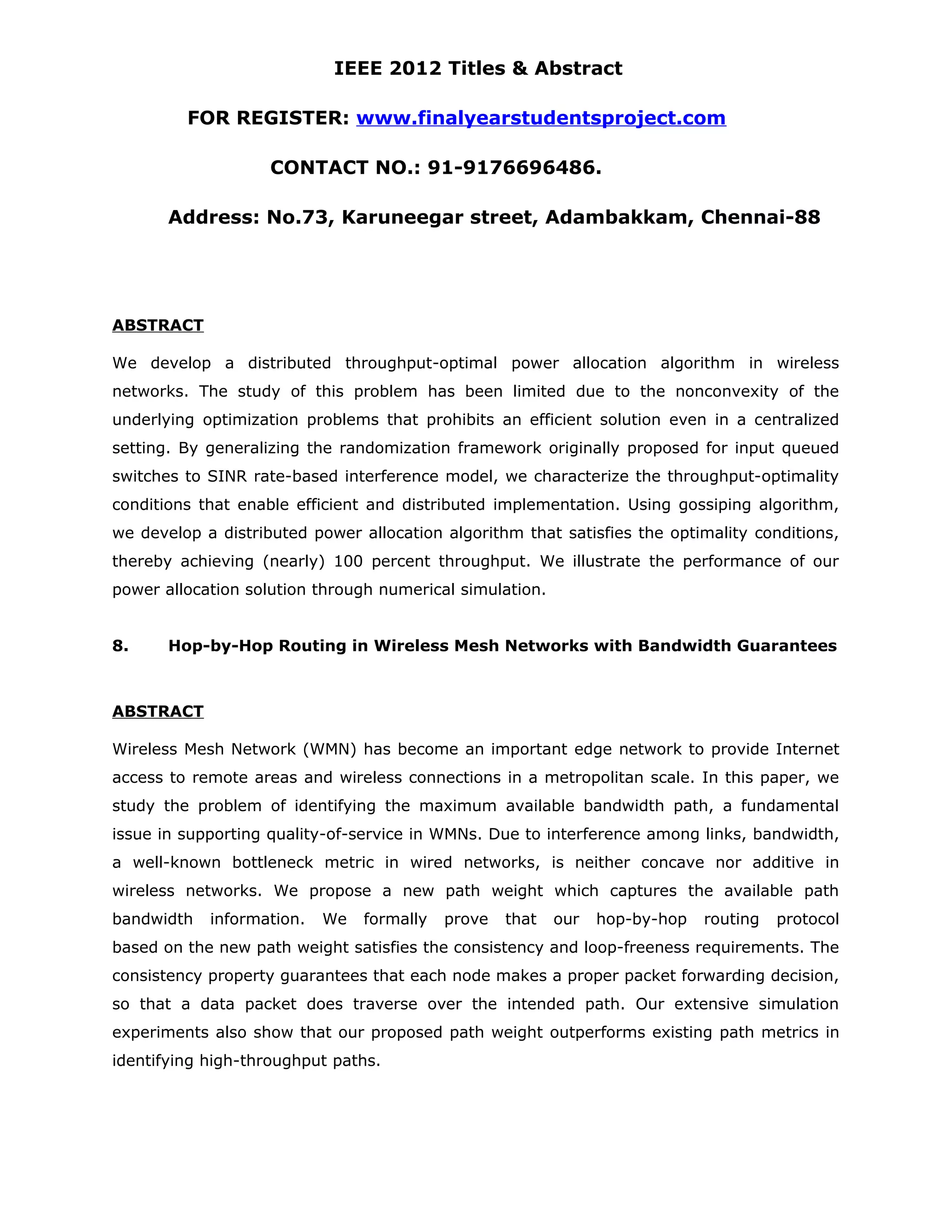
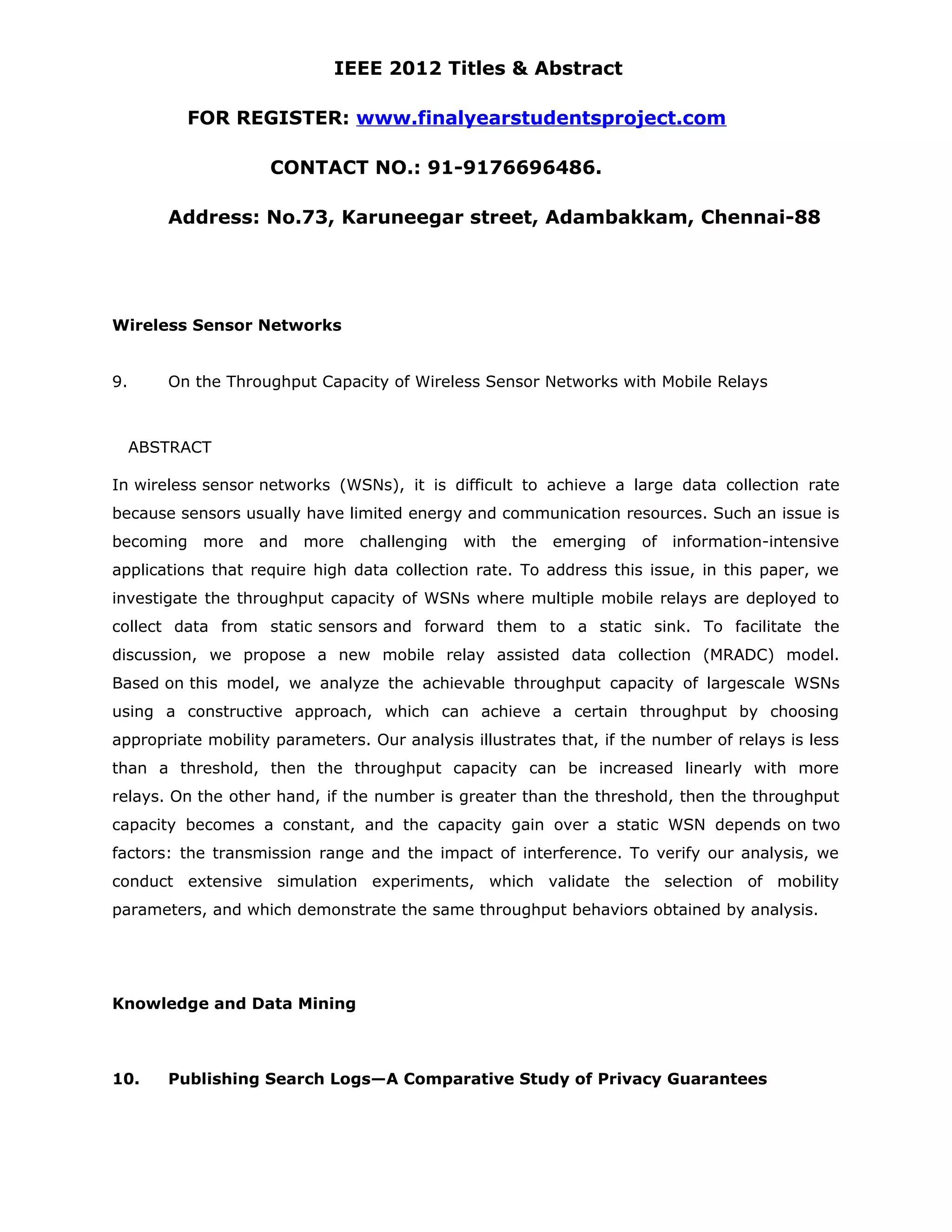
![IEEE 2012 Titles & Abstract FOR REGISTER: www.finalyearstudentsproject.com CONTACT NO.: 91-9176696486. Address: No.73, Karuneegar street, Adambakkam, Chennai-88 ABSTRACT Search engine companies collect the “database of intentions,” the histories of their users' search queries. These search logs are a gold mine for researchers. Search engine companies, however, are wary of publishing search logs in order not to disclose sensitive information. In this paper, we analyze algorithms for publishing frequent keywords, queries, and clicks of a search log. We first show how methods that achieve variants of k- anonymity are vulnerable to active attacks. We then demonstrate that the stronger guarantee ensured by ε-differential privacy unfortunately does not provide any utility for this problem. We then propose an algorithm ZEALOUS andshow how to set its parameters to achieve (ε, δ)-probabilistic privacy. We also contrast our analysis of ZEALOUS with an analysis by Korolova et al. [17] that achieves (ε',δ')-indistinguishability. Our paper concludes with a large experimental study using real applications where we compare ZEALOUS and previous work that achieves k-anonymity in search log publishing. Our results show that ZEALOUS yields comparable utility to k-anonymity while at the same time achieving much stronger privacy guarantees. 11. Efficient Multi-dimensional Fuzzy Search for Personal Information Management Systems ABSTRACT With the explosion in the amount of semistructured data users access and store in personal information management systems, there is a critical need for powerful search tools to retrieve often very heterogeneous data in a simple and efficient way. Existing tools typically support some IR-style ranking on the textual part of the query, but only consider structure (e.g., file directory) and metadata (e.g., date, file type) as filtering conditions. We propose a novel multidimensional search approach that allows users to perform fuzzy searches for](https://image.slidesharecdn.com/javaanddotnet-121120011031-phpapp02/75/Java-and-net-IEEE-2012-7-2048.jpg)
